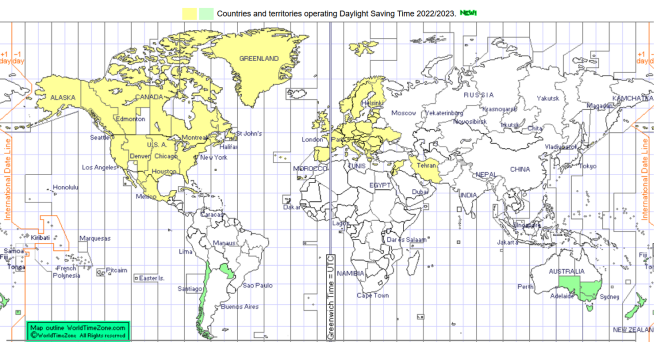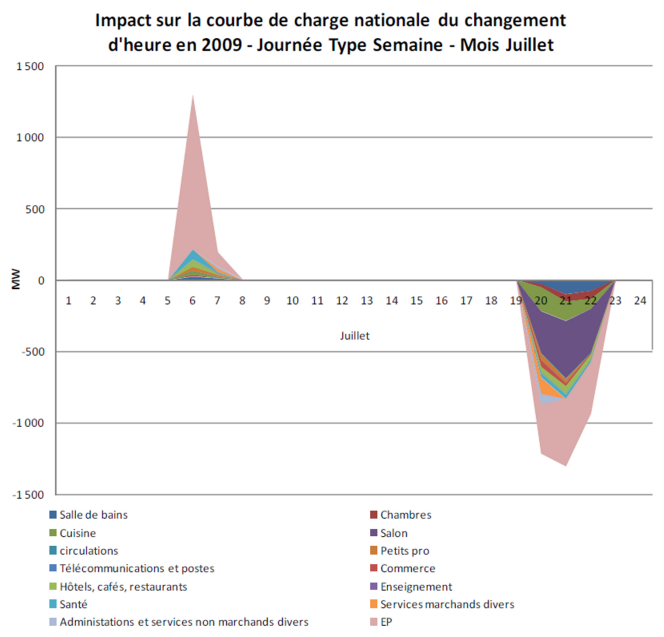Don’t forget to set your clocks and alarm clocks forward. France will switch to winter time on the night of October 28 to 29: at 3 a.m., 2 a.m. But its removal is a controversial time change Decided by the European UnionIt looks like a sea serpent.
This change, which was first implemented in 1916 and abandoned in 1944, was re-implemented with a decree in September 1975. It was intended to be temporary and limit energy consumption in the midst of the oil crisis. With the energy supply issue returning with fever due to the war in Ukraine and calls for energy sobriety growing, a switch to winter time may seem beneficial. But is it really so? What are the shortcomings of this device?
1. A system that is not universal and difficult to understand
At the European level, where the time change regime was gradually generalized in the 1980s before being harmonized in 2002, the European Commission proposed its elimination in 2018… in 2019. However, in March 2019, the European Union Parliament voted to postpone it. It had to agree on procedures with the Council of Heads of State and Government by 2021. Since then, between Brexit and the Covid-19 pandemic, this question has remained unresolved. One challenge is to encourage countries to align their legal times (summer or winter) to avoid confusion of time zones.
In France, an online consultation organized by the National Assembly at the beginning of 2019 received more than two million responses; the vast majority of them (83.74%) were in favor of ending the time change. More than 60% of the participants claimed to have experienced this situation. “a negative or very negative experience” to change.
Feature of the current system: It does not concern overseas territories that never change the time (except for Saint-Pierre and Miquelon, based in Canada). In fact, most of them are located at latitudes where, unlike Europe, differences in sunlight throughout the year are small.
worldwideMany countries such as Argentina, Tunisia, Egypt, Turkey, Russia and Armenia have decided to abandon seasonal time changes.

2. Energy gains without consequences
The main argument for changing the time has until now been the energy savings to be achieved by taking advantage of longer daylight periods in the summer months and by approaching the rhythm of the sun in the winter months. However, various studies on the subject show that it saves energy and CO2.2 “modest”According to the Environmental and Energy Management Agency (Ademe).
For this reason, An Ademe study published in 2010 It shows that the switch to daylight saving time leads to:
- higher electricity consumption in the morning, especially peaking at 6 a.m. (equivalent to 5 a.m. in winter);
- much less consumption in the evening, especially between 8pm and 9pm (equivalent to the period between 7pm and 8pm in winter).

In other words, households, on average, pay slightly more for electricity in the morning, but save money in the evening. To get an idea, one hour less lighting saves about 0.10 euros.
In 2009 (the year considered in the study), average electricity demand at 7 pm decreased by 3.5 gigawatts (GW). In total, energy savings that year were estimated at 440 gigawatt hours (GWh), mainly in public lighting (pink in the chart above); This is equivalent to one year’s illumination of a city with 800,000 inhabitants, such as Marseille.
World
Special offer
Get unlimited access to all our content 10.99 €5.49 per month for 1 year.
Use
However, since then, this effect has tended to decrease due to the increasing performance of lighting systems (low consumption bulbs and LEDs). In 2018, this decrease was only 351 gigawatt hours. It is estimated by Ademe that energy savings in lighting will be 258 gigawatt hours by 2030.
Since it is known that the majority of home energy consumption comes from heating, not lighting, evidence of energy savings has not yet been demonstrated.
Worse still, a recent study in Britain claims that removing the October time change would save £400 (€460) per household per year because there would be longer daylight in the evenings, reducing demand at certain hours.
3. Conflicting results in road accidents
The Association Against Double Daylight Savings is campaigning against the time change for, among other reasons: “There is an increase in traffic accidents”. He bases his claim on figures from 1976, when daylight saving time was introduced, and concludes that there were 661 more deaths on the roads between April and October that year than in 1975.
Inside A report published in September 2014The European Commission, which examined many studies on the subject, states the following: “Often contradictory results”some reports “Suggests the change improves road safety”, thanks to better visibility at certain times of the year and day (as described) A Scottish study in 2010), others “It shows a potential increase in traffic accidents due to sleep disorders.”.
But this year Road Safety decided to remind people of the importance of making themselves visible on public roads. “reflective devices (vest, armband, gloves, straps on backpack, school bag, etc.)” just before the time change. According to data compiled by the National Interministerial Observatory for Road Safety between 2015 and 2019, the number of accidents involving pedestrians increases sequentially by 42% in November compared to October.
4. Health consequences?
In 2008, A study published in Sweden New England Journal of MedicineBased on statistics from the country between 1987 and 2006, he noted: “Statistically significant increase in the risk of heart attack” Especially in the week following the time change during daylight saving time.
A study conducted by the European Commission in September 2015 writes: “Health may be affected by the change in the body’s biorhythms, with possible sleep and mood disorders.”.
But just like winter depression cannot be explained by: Causal link between lack of light and decreased morale (rather weak from a scientific perspective)Disruptions caused by time change can currently only be explained by hypotheses. However, the Commission concludes: “Evidence regarding overall health effects (i.e., balancing of putative negative and positive effects) is insufficient.”.
in 1997 Senate report assured “The world of medicine (remainder) They are quite divided on the existence of problems attributable to daylight saving time. Whether real or imagined, medical risk is in any case also integrated by potential patients: “19% of doctors (was doing) “There is a report that there is an increase in the consumption of drugs and especially sedatives during the time change”. Inside Choose an OpinionWay survey to understandIn the survey published in October 2015, 75% of those surveyed said the time change was “Sleep, diet or mood”.


